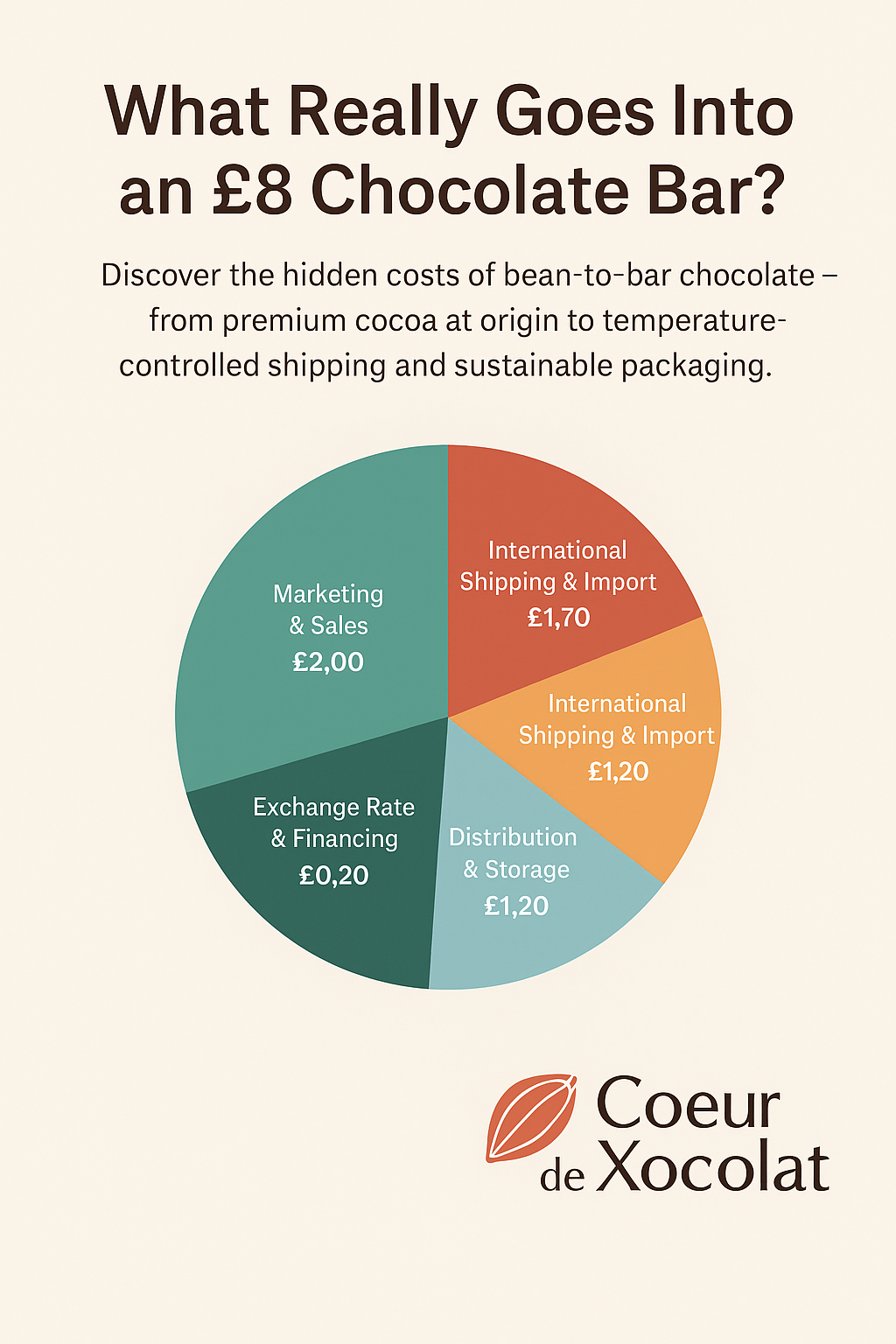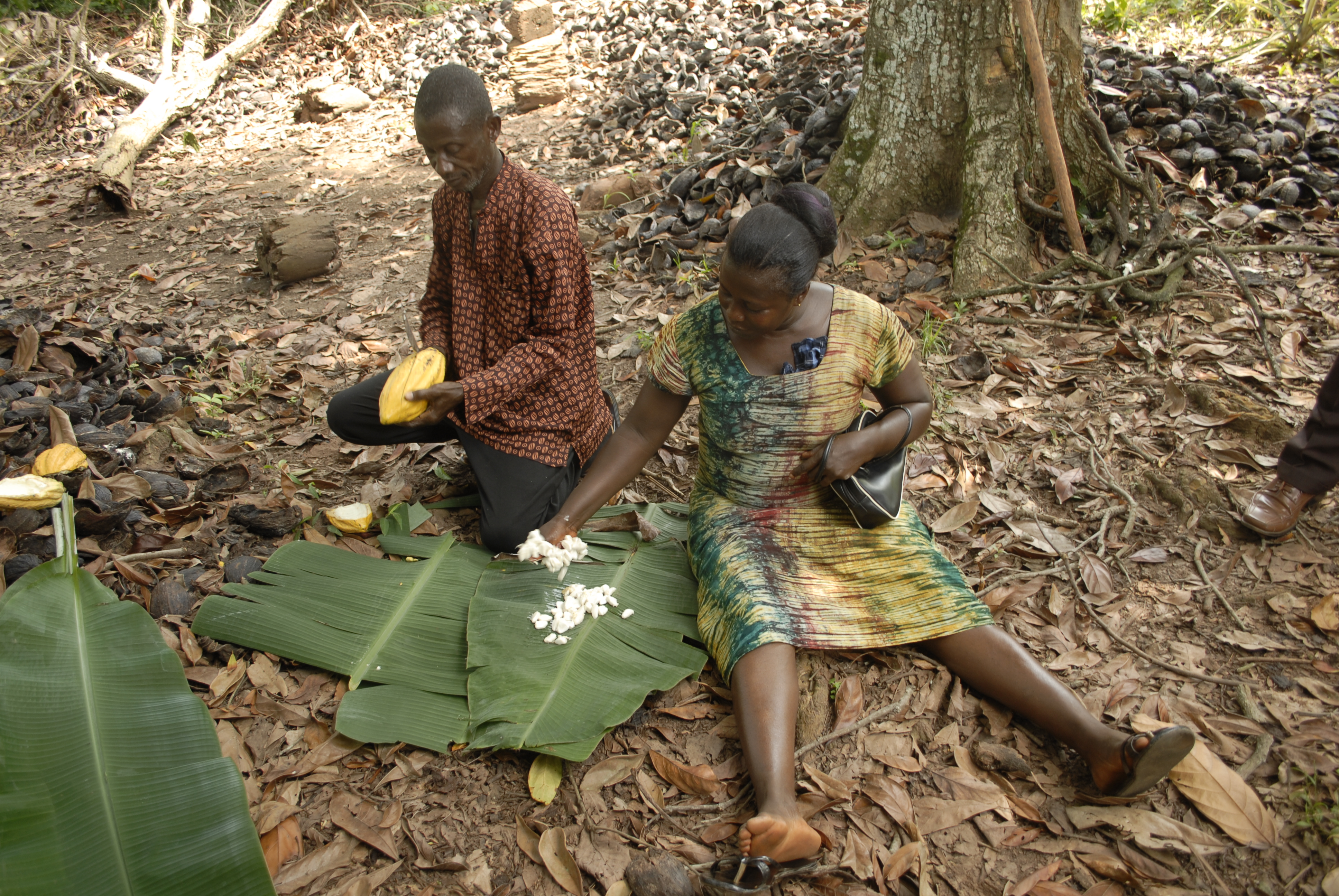 Reflections from Chocoa 2025, Amsterda
Reflections from Chocoa 2025, Amsterda
At this year’s Chocoa Conference in Amsterdam, I spent time with some of the world’s most passionate cocoa farmers and chocolate makers.
Our conversations kept circling back to one question:
Why doesn’t more of that £8 retail price go directly to the farmer?
The truth is, bean-to-bar chocolate is built on a supply chain that is small-scale, high-touch, and expensive to run but it also creates exceptional flavour and value.
Cost Breakdown Per 50 g Bar
|
Cost Component |
Details |
Estimated Cost per bar |
|
Cocoa & Production (C) |
Premium fine flavour cocoa beans (much more expensive than bulk), careful fermentation & drying, high cocoa percentage recipes (meaning more costly cocoa solids and less cheap sugar), small-batch labour and energy, plus robust, protective packaging |
£2.00 |
|
International Shipping & Import (S) |
Customs clearance, port/airport trucking, temperature-controlled shipping (air or reefer sea freight), UK import duty (8–10%), VAT, and clearance fees. |
£1.70 |
|
Distribution & Storage (D) |
Professional, temperature-controlled warehousing and UK logistics to retailers or direct customers. |
£1.20 |
|
Marketing & Sales (M) |
Branding, content creation, retailer/distributor margins (30–50%), POS materials, online store costs, and transaction fees |
£2.00 |
|
Exchange Rate & Financing (F) |
Buffer for currency fluctuations (USD-priced cocoa and freight) and interest on working capital. |
£0.20 |
|
Profit (P) |
Sustainable margin to allow reinvestment in equipment, packaging, and farmer relationships. |
£1.60 |
|
Total Cost: £7.10 |
|
|
|
Retail Price: £8.00 |
|
2. Why Craft Chocolate Costs More
Higher Cocoa Content Higher Cost – Most mass-market chocolate is loaded with cheap sugar and low cocoa percentages. Craft chocolate flips this ratio: more cocoa, less sugar, more flavour — and a higher cost per kilo.
Packaging Reliability Premium bars must arrive unbroken. Every broken bar costs £3–4 to remake at micro-batch scale.
Temperature Control Is Essential Bloom or heat damage makes chocolate unsellable. Cold-chain shipping and storage are non-negotiable.
Retail Margins Are High Specialty retailers take 30–50% of the price to keep the bar on the shelf, while distributors add 15–18%.
Currency Risk Is Real Cocoa, shipping, and even machinery are dollar-denominated. Small makers must build in a buffer for exchange rate swings.
3. Why £8 Might Not Be Enough
While £8 is typical for a 50 g fine flavour bar, it leaves little room for risk or reinvestment. £8.50–£9.00 is closer to a sustainable retail price, covering:
Air freight when sea freight delays risk product freshness
Premium packaging upgrades to reduce waste
Currency fluctuations that would otherwise wipe out margins
Long-term investment back into farmer communities
4. What This Means for Farmers and Makers
This breakdown is designed to educate cocoa farmers and consumers alike.
Craft chocolate makers cannot (and should not) try to compete with industrial chocolate on price. The value is in:
Quality More cocoa solids, better fermentation, carefully conched chocolate.
Craftsmanship Slow, precise processes rather than mass-production shortcuts.
Storytelling & Transparency A clear link from farm to finished bar.
Final Thought: Paying for Flavour and Fairness
When you buy a bar of fine flavour chocolate, you’re not buying sugar and cocoa butter, ou’re investing in:
Farmers’ livelihoods
Biodiversity and sustainable farming practices
A better-tasting, higher cocoa product that delivers far more than a sugar hit
This is why £8 (or even £9) is a fair price because it reflects the real cost of making ethical, flavour-rich chocolate from bean to bar.
